Gaisburger Marsch is a southern German stew from Swabia in Württemberg. The name refers to the Gaisburg district of Stuttgart. There are all kinds of stories about the origin of its name, but that’s not something for a cooking blog.
Apart from its wonderful, genuine flavour, the dish fascinates us for two reasons:
On the one hand, it is an excellent example of the techniques used to prepare dishes a hundred years ago that have lost none of their relevance and class to this day.
It is also a dish with spaetzle, the Swabian noodle, which you should definitely have eaten and prepared once. There will be more dishes with spaetzle here, that’s for sure.
This dish is not suitable for vegetarians and vegans. It is not possible to offer a variation, because it would no longer be the same.
We start with a beef broth, however, we don’t want to just cook out the beef used, but eat the finer parts of it.
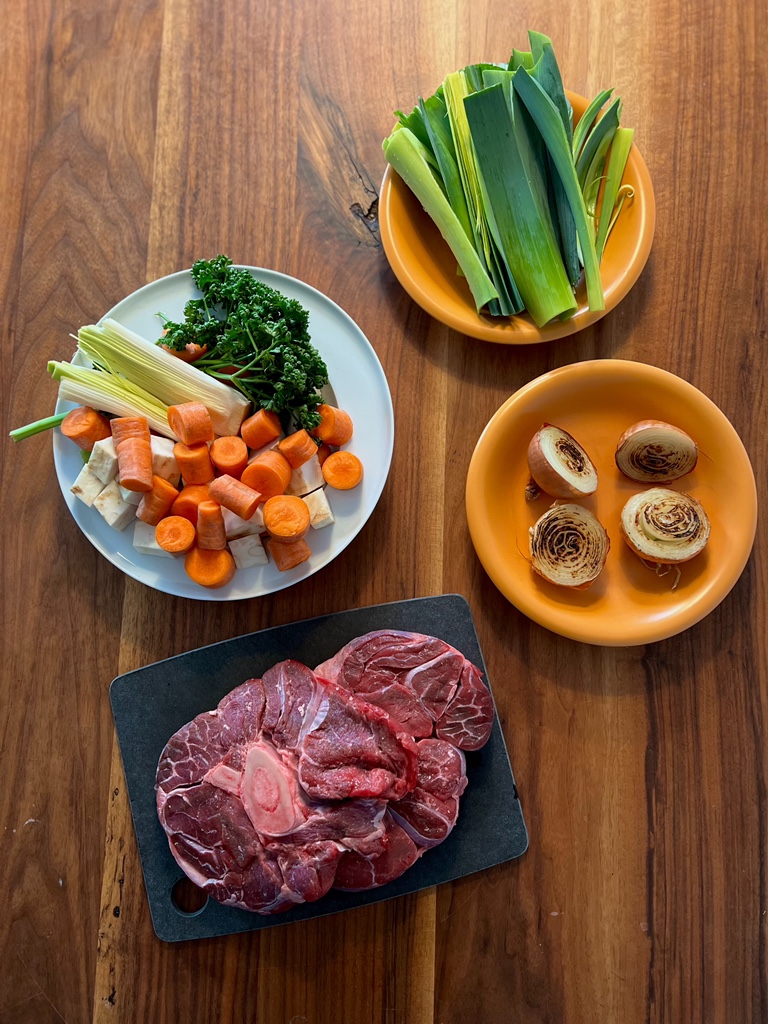
For the necessary cooking technique, please first read our recipe for Consommé double.
If you want to cook meat to extract as much of its flavour as possible into the broth, then you must not salt the water.
Conversely, if you want to cook meat in liquid but retain its flavour as much as possible, then the liquid must be well salted.
Here we want the best of both worlds, which is why we will salt gently (unlike the Consommé).
Beef shanks work very well, but beef brisket would also be a classic choice.
If you use a beef brisket, consider adding some bone marrow to give the broth more strength.
As with consommé, we use root vegetables (celery and carrots), plus leek and parsley. We intensify the flavour of our broth with additional leek, namely the green parts that we would rather not use for other dishes.
Again we need blackened onions, you will find all the information about this in the Consommé recipe.
As for spices, we need bay leaves, black pepper and juniper berries.
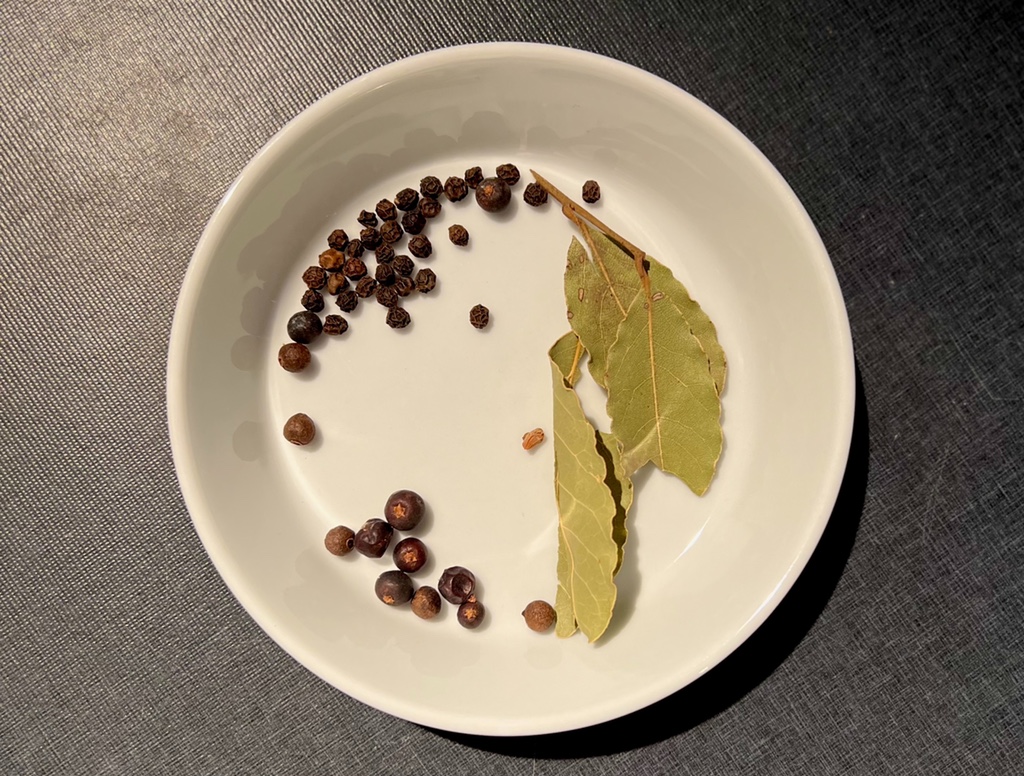
Most recipes do not advise this, but we recommend – again as with Consommé – boiling the meat once briefly and then immediately draining and rinsing it. You won’t lose any flavour and the broth will thank you with clarity.
In Europe, this is not done in domestic cooking, but in Asia it is. We will come back to this when we introduce you to Asian broths, especially Vietnamese Pho (“Phở”) and Japanese Ramen.
Then we put the meat with the blackened onions and 3 litres of cold water in a large pot and bring it to the boil. We then add the spices and 2 teaspoons of salt.

As soon as the water boils, foam will rise. You must remove this foam, otherwise your broth will become cloudy and less tasty. You can push the foam together with a wooden spoon, it will not spread again. You can then easily remove the foam with a small sieve.
You have to do this a few times until nothing more comes up.
Once that is done, we add the vegetables.

Heat again until boiling, then put a lid on the pot and let it simmer on low heat for at least 2 hours. 2 ½ hours is fine, 3 hours would be too much as we still want to eat the meat.
We are cooking a large portion, so we stop the process after 2 ½ hours. It then looks like this:

Using tongs or a slotted spoon, remove the meat together with the bones and leave to cool slightly.
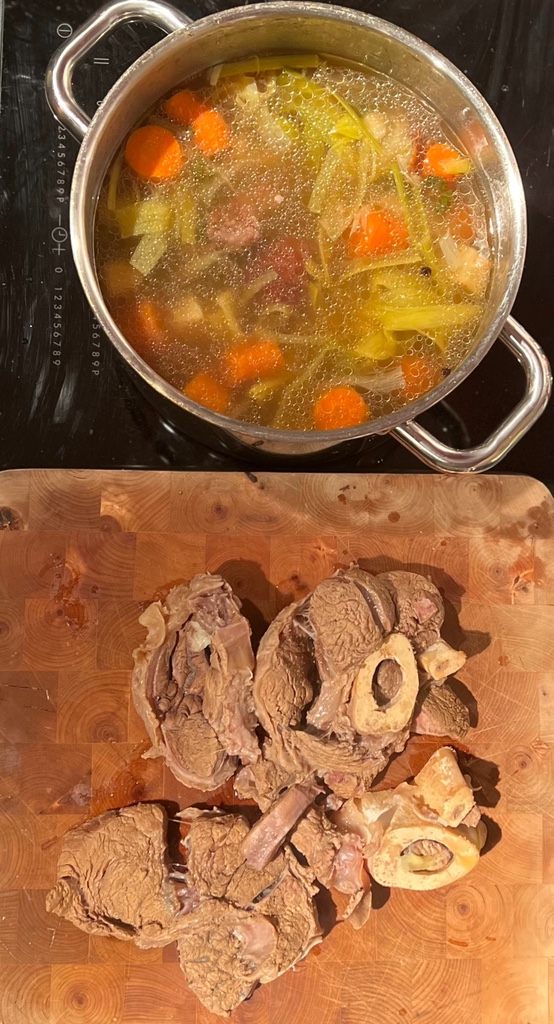
The pieces of meat are very soft and fall apart by themselves. We add the marrow from the bones to the broth.

As we have delicately salted, the broth will not be as strong as in a Consommé. We therefore pass it through a sieve to remove the vegetables and spices and let it simmer until the initial 3 litres have become about 2 litres. This concentrates the aromas. Then we gradually salt the broth until it has the desired flavour.
In the meantime, we dice the root vegetables into a size that fits nicely on a spoon:
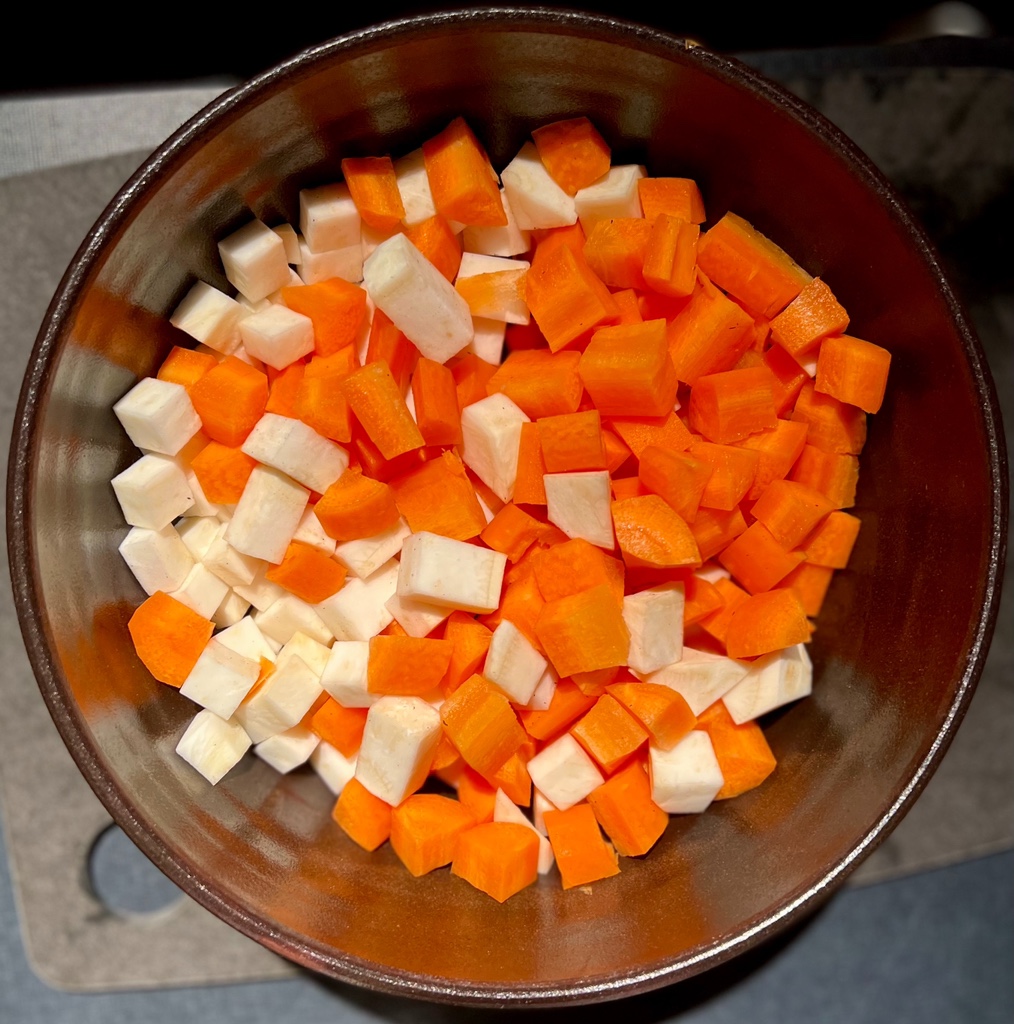
We do the same with the potatoes, but separately, because they take less time to cook later:
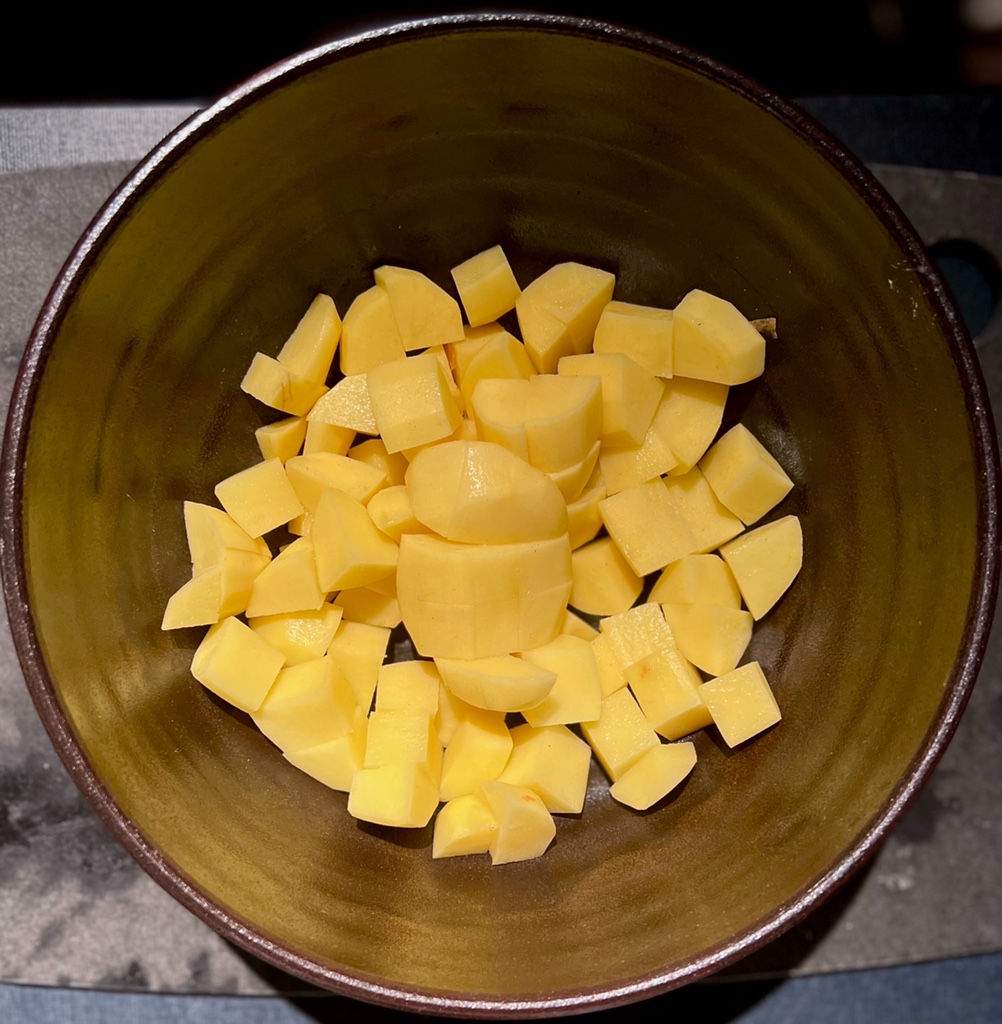
The meat is so soft that we can process it with our hands. We remove the parts we don’t want to eat and divide the rest into similar sized pieces.
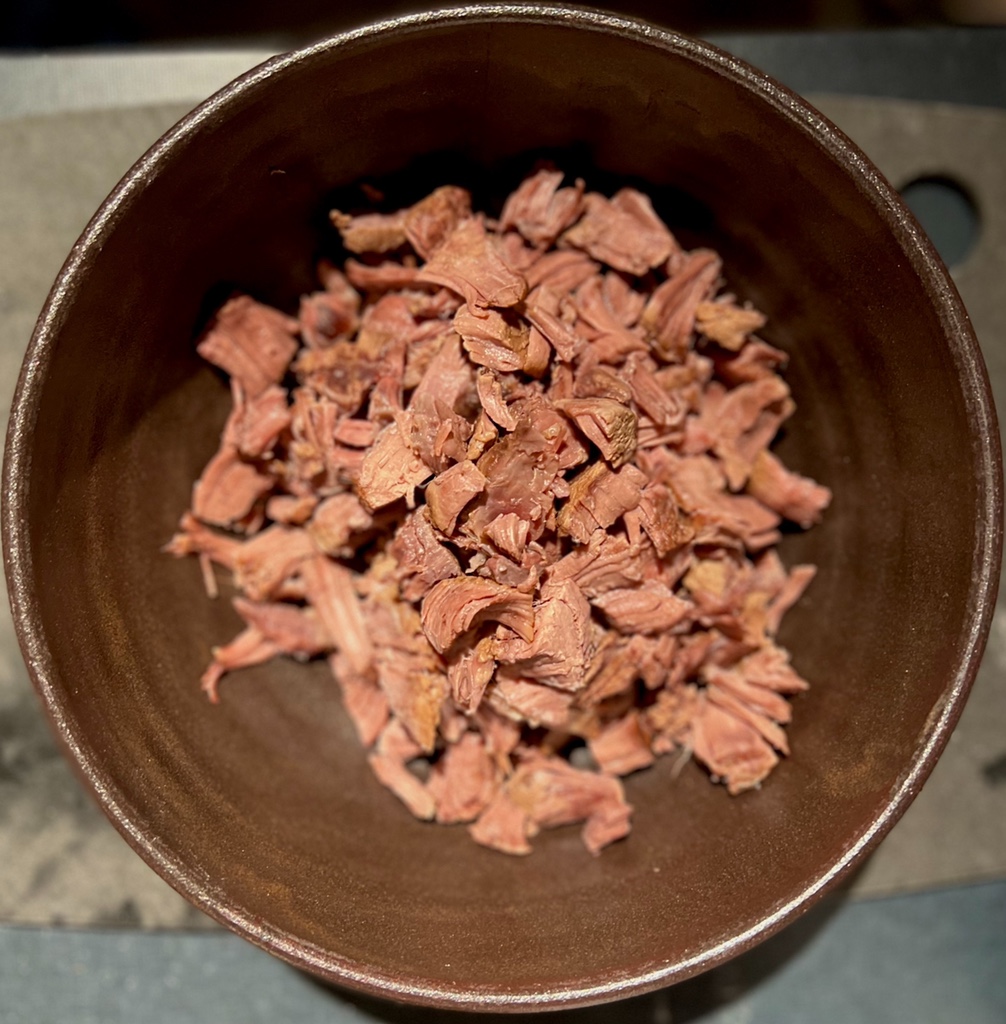
When the broth has taken on your desired flavour, you can add the meat and leave it in until serving.
We heat a generous portion of butter and sauté the celery and carrots in it without the vegetables colouring. You can smell when it is ready to release its wonderful sweet flavour.
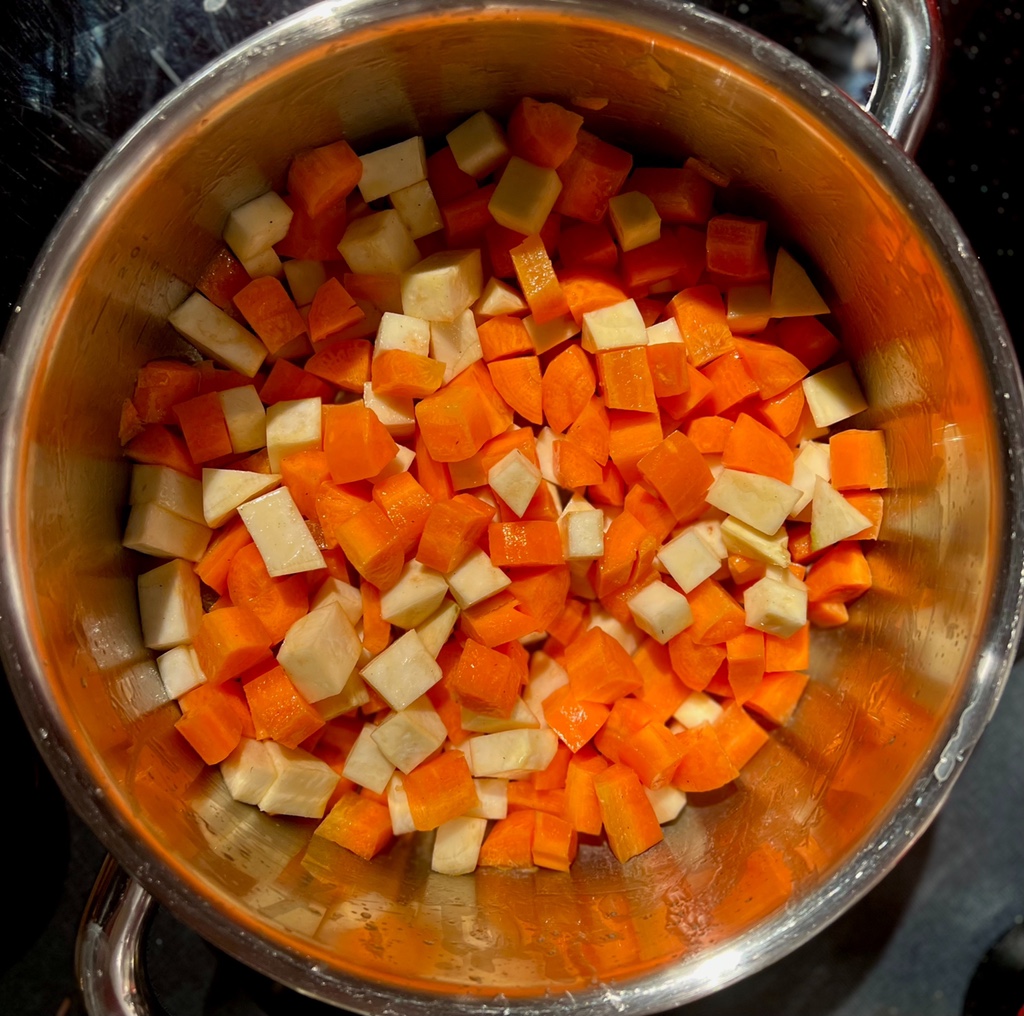
Now add the potatoes and pour on some of the stock so that the vegetables are just covered. In this, the vegetables are cooked.
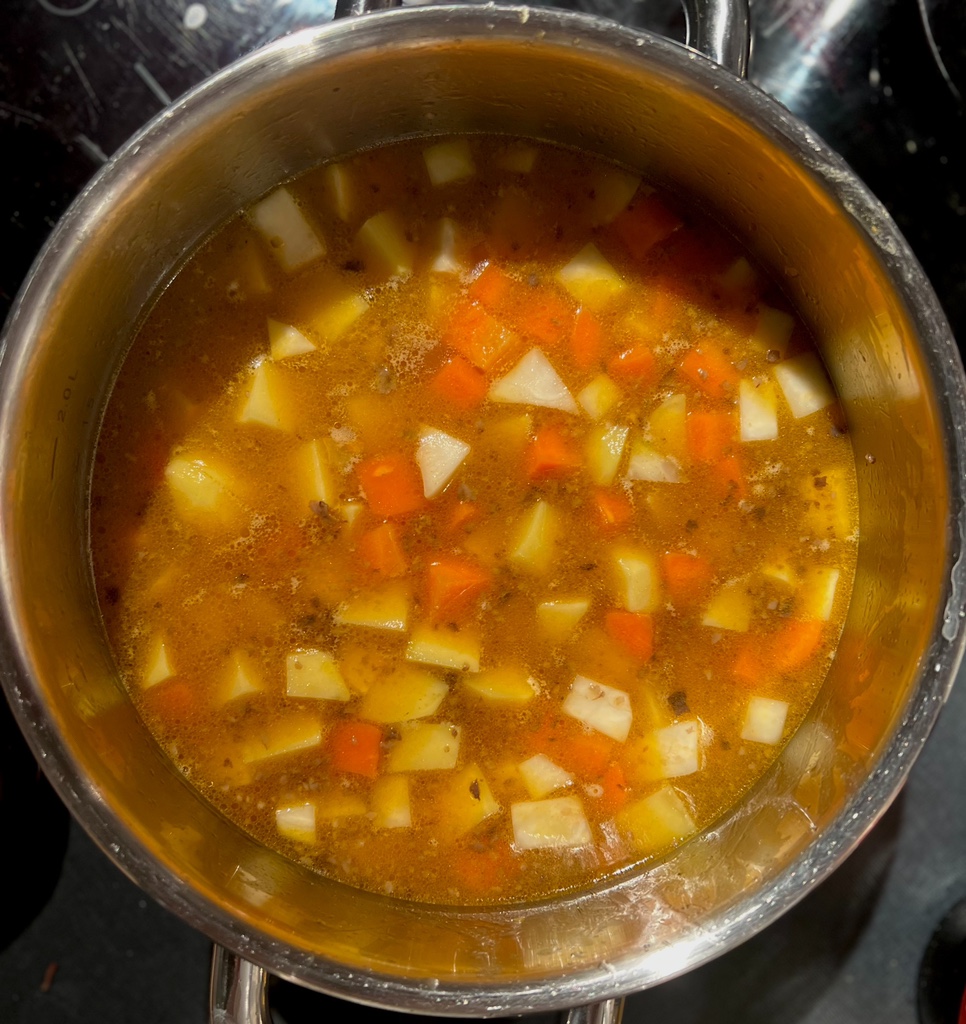
By using a separate pot for this, you have more control over the cooking process than if you put everything in the same pot.
When the potatoes are soft, turn off the heat and leave the vegetables and their broth until you are ready to assemble the dish.
Now for the spaetzle:
This type of noodles requires a fine flour. In German-speaking countries, such flour is sometimes called “griffig” or “doppelgriffig”. There is also flour that is already called spaetzle flour. Other suitable types of flour are called ” Wiener Griessler” or “instant flour”. If such things are not available to you, use wheat flour that is as fine as possible and suitable for pasta, e.g. the Italian “Tipo 00” flour (“Doppio Zero”).
Flour, salt, eggs and water are put directly into a bowl. For normal spaetzle this would be 300 g flour, 6 – 8 g salt, 4 eggs and 100 ml water. We make “Sunday spaetzle” with more egg, omit the water and use 6 eggs. Either version is good, but the latter is a little more substantial and quite easy to work with because of the more liquid dough.
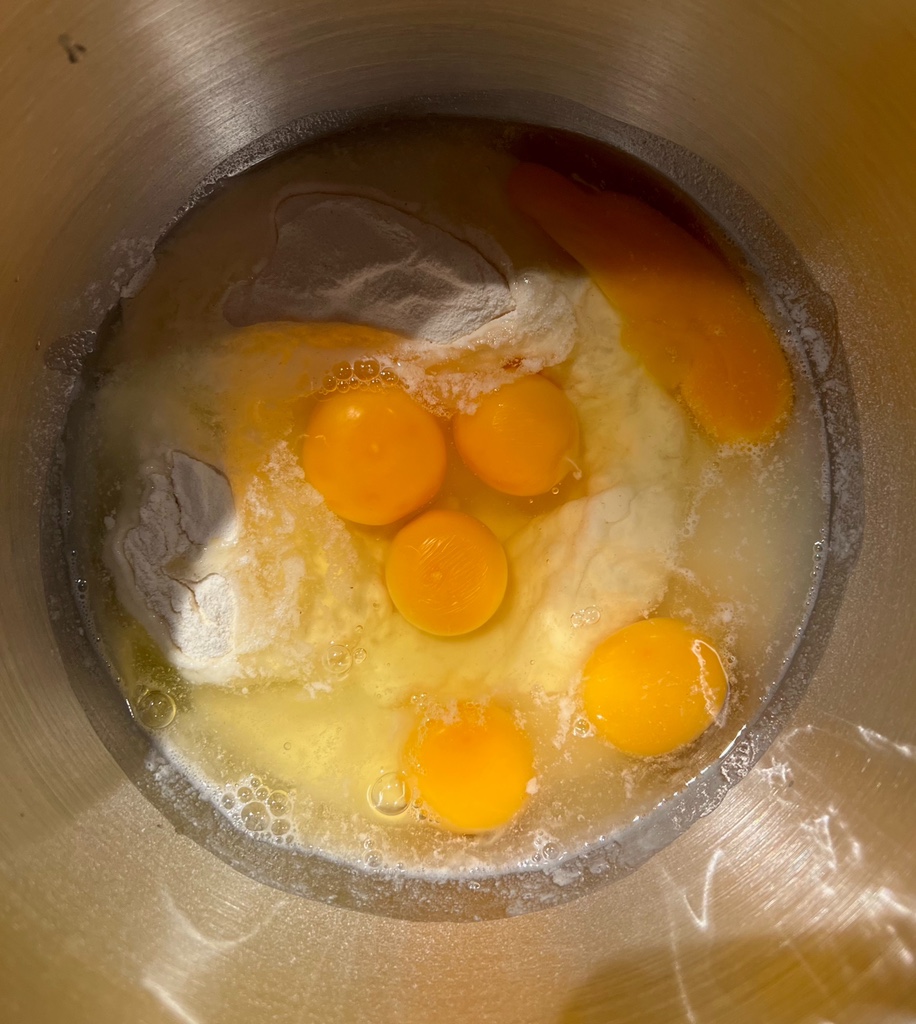
Now stir the dough very vigorously, you almost beat it. You can do this with a wooden spoon or very well with your hand. The idea is to incorporate air, hence the use of a lot of energy.
We make it easy and use the food processor. On the lowest setting for the initial blending, then we turn it up to speed 3 (on our KitchenAid) until the mixture starts to form bubbles.

There are tools for shaping spaetzle. These are mainly the spaetzle planer and the spaetzle press. But since these tools are rarely needed and cannot be purchased everywhere, we do it the classic way:
Spaetzle are scraped (“geschabt”).
You need a small board and a knife or similar tool.
We bring plenty of salted water to the boil and put a bowl of also salted cold water next to it. Then we dip our board into the hot water and put some of the dough on it. With the knife, which we also keep dipping into the hot water, we smooth and thin the dough and then scrape off the individual noodles.
This is what it looks like when an impressive elderly lady from Swabia does it (commenting in very likeable, massive dialect). Yes. You think: I’ll never be able to do this. Don’t let that discourage you. It may look difficult, but we promise that you will get great results the first time. You just have to dare to do it – and you can take your time. Spaetzle will forgive almost anything.
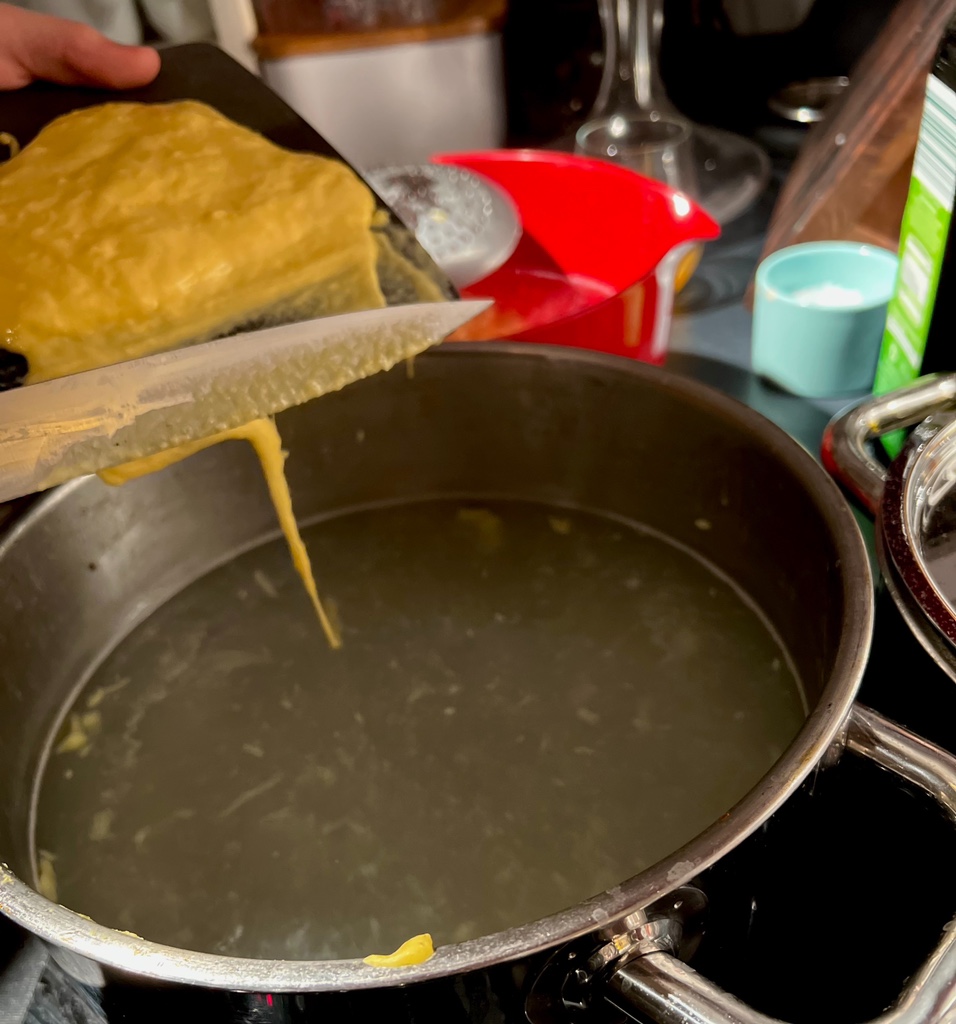
As soon as the spaetzle float to the top, let them cook for another 3 minutes, then put them into the cold water with a skimmer. This way they keep their shape and don’t stick together.
When you have finished the dough, pour the spaetzle through a sieve.
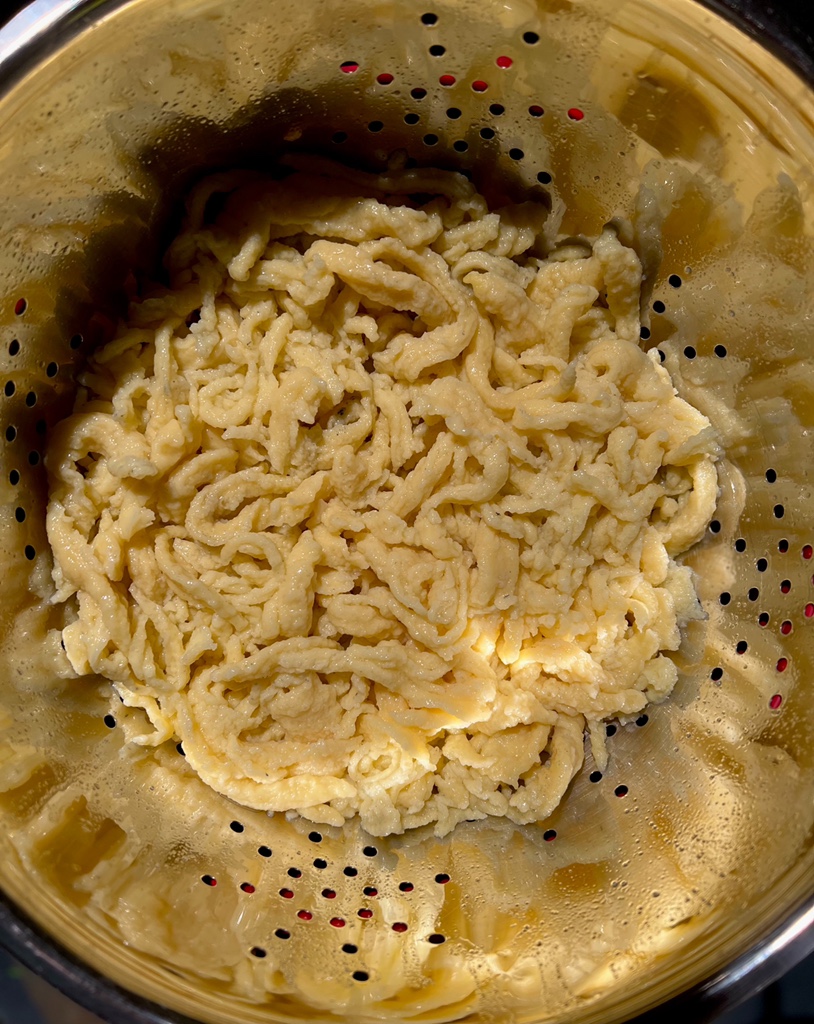
We halve peeled onions and then cut them crosswise into strips – not lengthwise, because that way they retain more structure. Brown them in plenty of butter over medium-high heat for about 15 minutes until golden.

Cut the chives into small rolls. Parsley is more often recommended in recipes, but chives and beef stock are the truly brilliant combination.
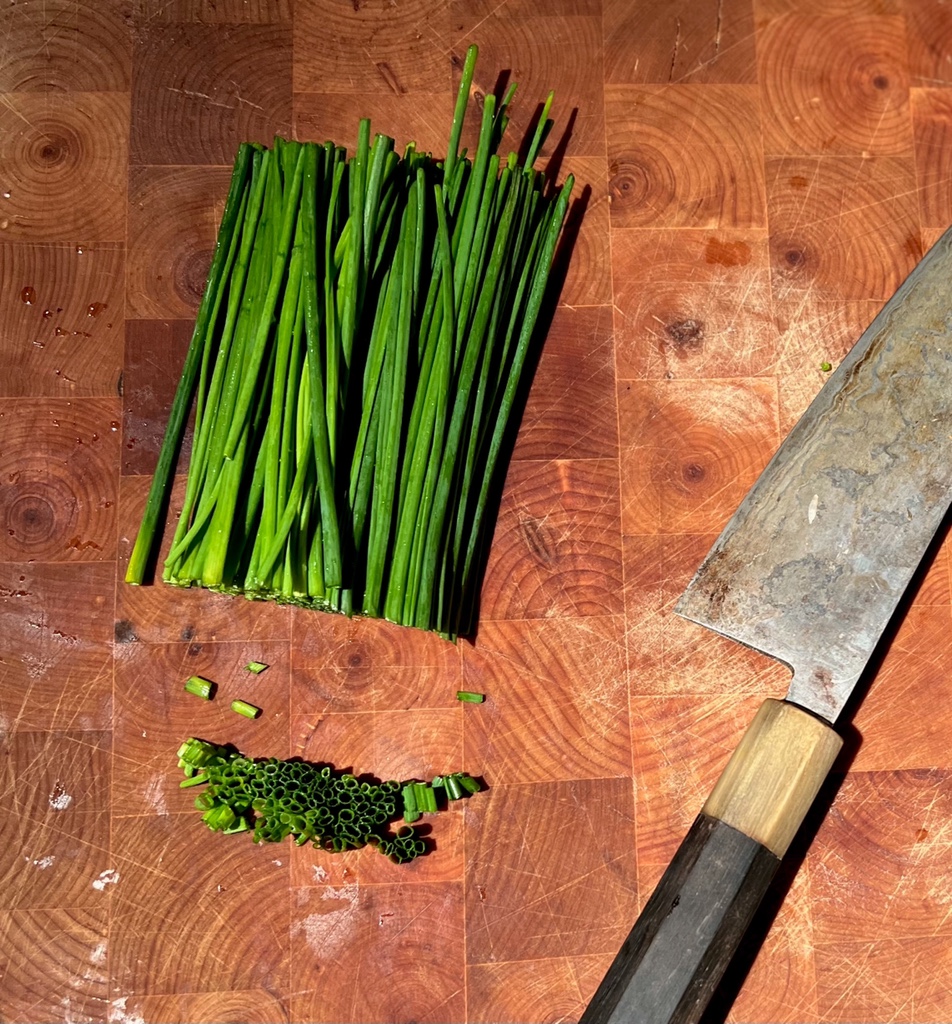
When the onions are golden, everything is ready.
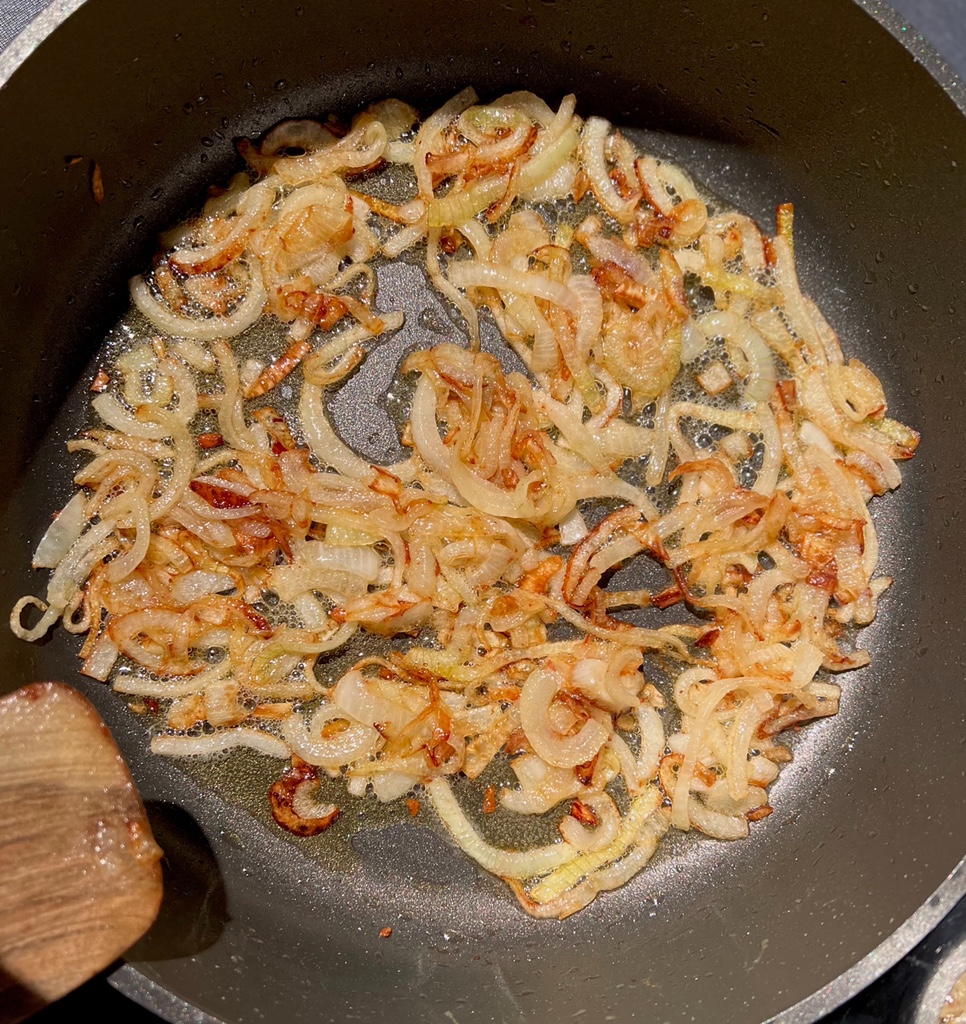
We gently heat the pot with the broth and the meat, as well as the second pot with the broth and the vegetables. Now we put as much of each into a large, deep plate as we want to eat as a combination. Add the spaetzle, which will immediately reach the right temperature in the hot broth.
Finally, we spread golden onion strips and chives on top.
The result tastes just as it looks:
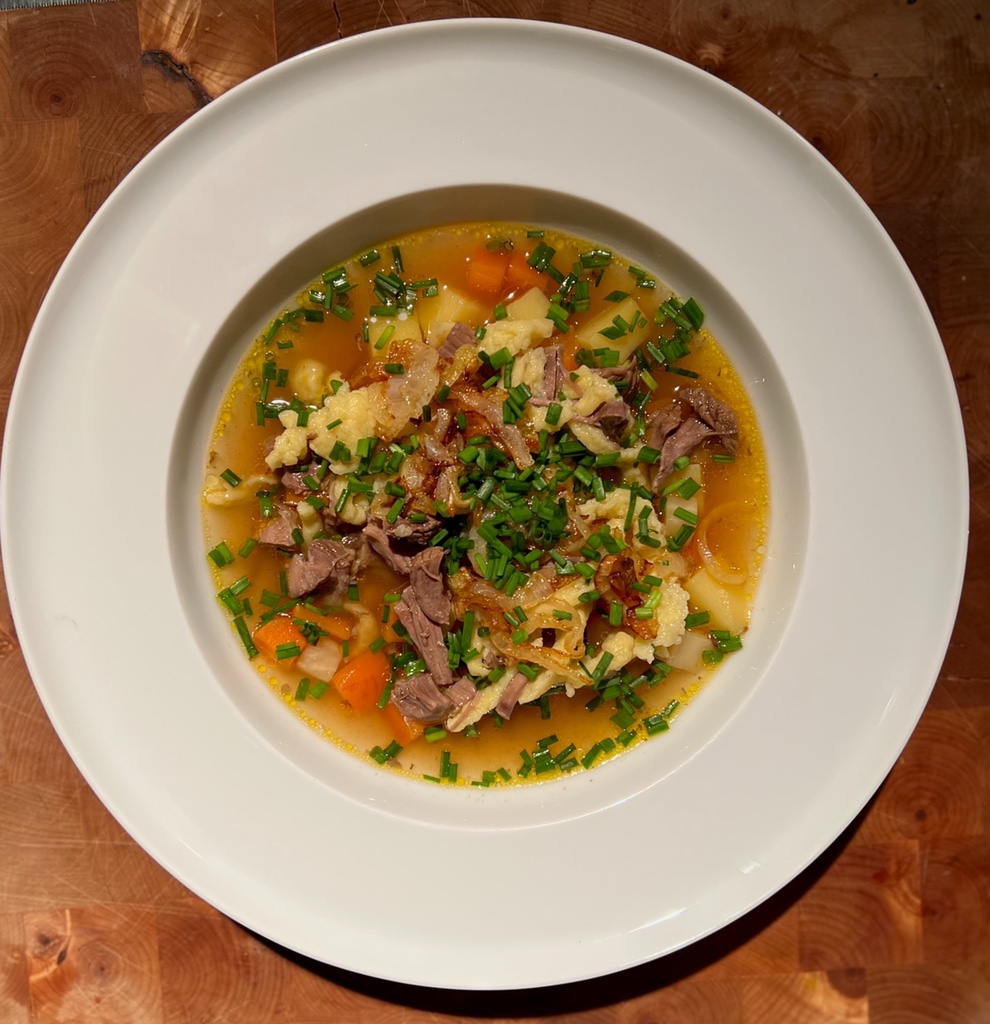
Ingredients (serves 4 – 6):
Stock and meat:
1.2 kg beef shanks (alternative: beef brisket).
2 bunches of soup vegetables (celery, carrots, leek, parsley)
– or: 350 g each celery and carrots, 1 leek, 1 bunch parsley –
2 (blackened) onions
Spices: Bay leaves, peppercorns, juniper berries
For approx. 500 g spaetzle:
300 g spaetzle flour, 4 eggs, 8 g salt, 100 ml water
(alternatively: 300 g spaetzle flour, 6 eggs, 8 g salt)
For the vegetables:
300 g each celery and carrots
300 – 400 g potatoes (waxy)
2 – 3 onions
1 bunch of chives (alternatively: parsley)
Butter
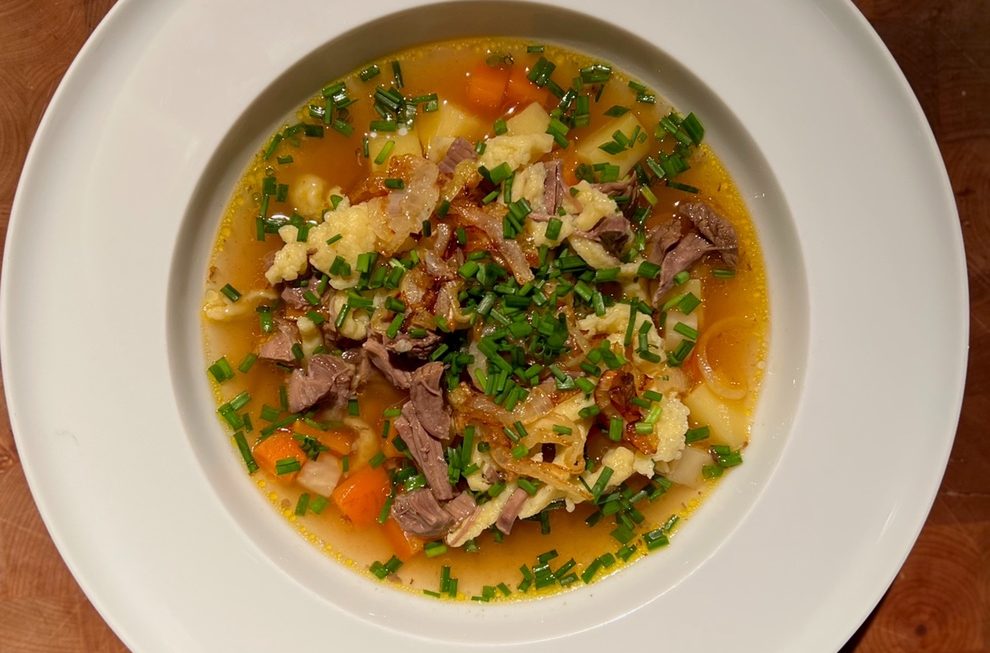
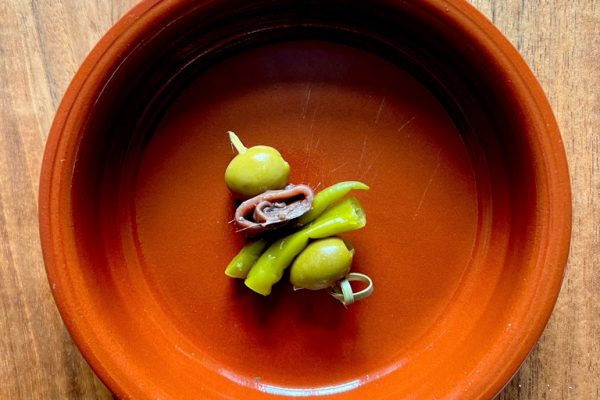
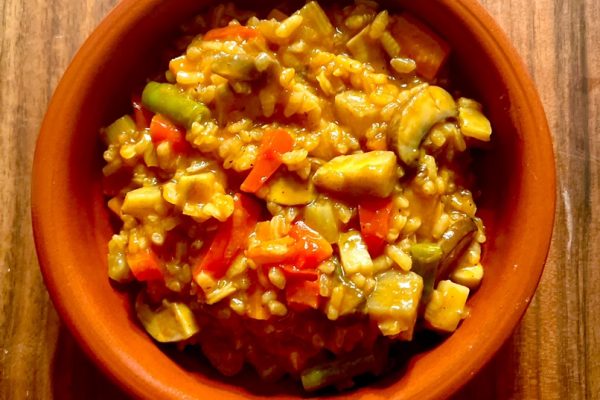
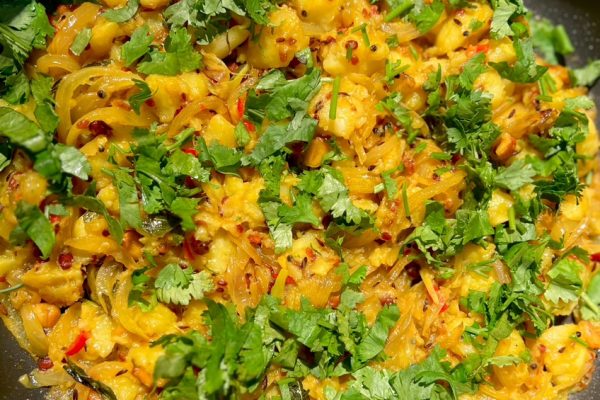
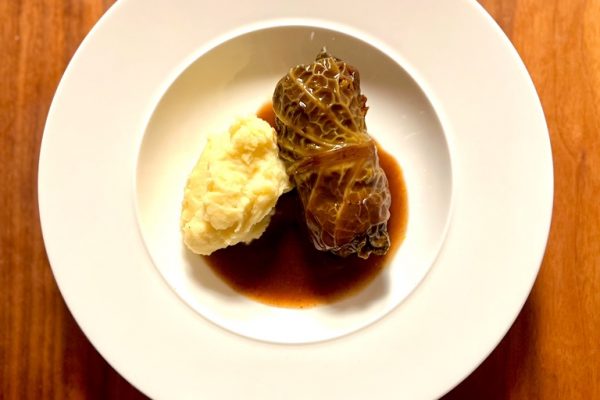
You brought it to the point!🤛